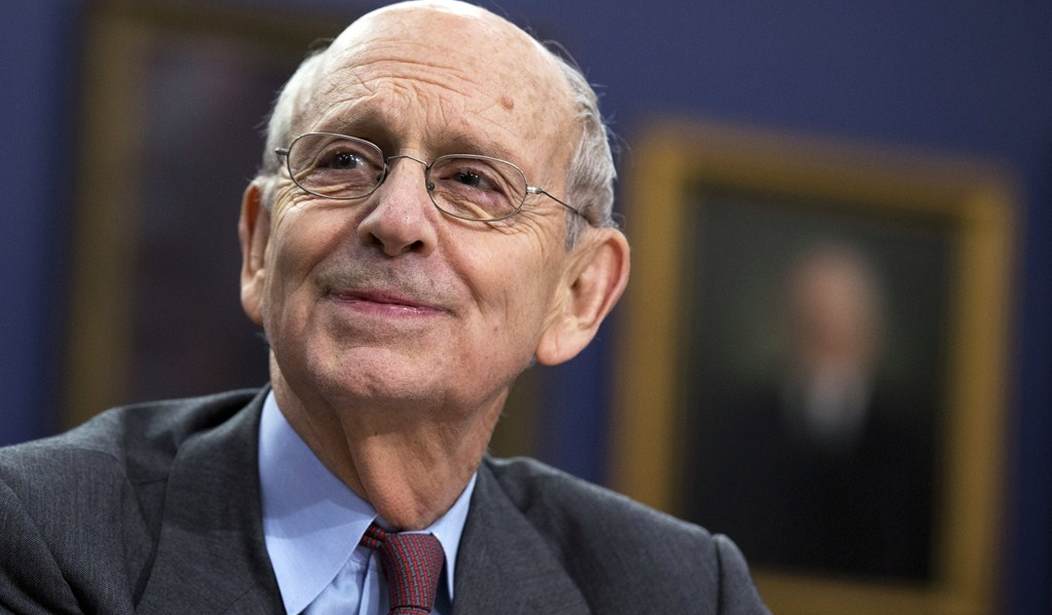Yesterday, Christine wrote about the Supreme Court’s five-to-four decision in Glossip v. Gross that approved the use of the three-drug cocktail administered during executions by lethal injection. Specifically, whether the sedative midazolam would render inmates who were sentenced to death subject to excruciating pain upon execution. It revisited the standard established in the 2008 Baze v. Rees, which upheld the three-shot cocktail protocol used in lethal injections was constitutional under the Eighth Amendment. Here’s the formal list of questions in Glossip, according to SCOTUSblog:
(1) Whether it is constitutionally permissible for a state to carry out an execution using a three-drug protocol where (a) there is a well-established scientific consensus that the first drug has no pain relieving properties and cannot reliably produce deep, coma-like unconsciousness, and (b) it is undisputed that there is a substantial, constitutionally unacceptable risk of pain and suffering from the administration of the second and third drugs when a prisoner is conscious; (2) whether the plurality stay standard of Baze v. Rees applies when states are not using a protocol substantially similar to the one that this Court considered in Baze; and (3) whether a prisoner must establish the availability of an alternative drug formula even if the state’s lethal-injection protocol, as properly administered, will violate the Eighth Amendment.
The three-drug cocktail is detailed in the certiorari of the U.S. Court of Appeals For the Tenth Circuit:
(1) sodium thiopental (a barbiturate) to induce a state of unconsciousness, (2)a paralytic agent to inhibit all muscular-skeletal movements, and (3) potassium chloride to induce cardiac arrest.
Baez ruled this combination wasn’t an unconstitutional form of punishment, but the writ added that anti-death penalty opponents forced pharmaceutical companies to prevent sodium thiopental and pentobarbital from being used in executions. Furthermore, European companies won’t ship sodium thiopental to the U.S. if it was to be used in executions.
Hence, the 500-milligram dose of the sedative midazolam, which Oklahoma’s death row inmates argued wouldn’t incapacitate them to the point of not feeling pain. The Court disagreed, citing that the petitioners “failed to established a likelihood of success of their claim…failed to established that any risk of harm was substantial…[and that] evidence suggests that a 500-milligram dose of midazolam will induce a coma.” You can read the whole opinion here.
Recommended
On the liberal wing, they’re wondering whether it’s time to reconsider if the death penalty is unconstitutional in its entirety … again.
Via Justice Sonia Sotomayor:
Petitioners contend that Oklahoma’s current protocol is a barbarous method of punishment—the chemical equivalent of being burned alive. But under the Court’s new rule, it would not matter whether the State intended to use midazolam, or instead to have petitioners drawn and quartered, slowly tortured to death, or actually burned at the stake: because petitioners failed to prove the availability of sodium thiopental or pentobarbital, the State could execute them using whatever means it designated. But see Baze, 553 U. S., at 101–102 (THOMAS, J., concurring in judgment) (“It strains credulity to suggest that the defin ing characteristic of burning at the stake, disemboweling, drawing and quartering, beheading, and the like was that they involved risks of pain that could be eliminated by using alternative methods of execution”). 8 The Eighth Amendment cannot possibly countenance such a result.
Via Justice Stephen Breyer:
Nearly 40 years ago, this Court upheld the death penalty under statutes that, in the Court’s view, contained safeguards sufficient to ensure that the penalty would be applied reliably and not arbitrarily. The circumstances and the evidence of the death penalty’s application have changed radically since then. Given those changes, I believe that it is now time to reopen the question.In 1976, the Court thought that the constitutional infirmities in the death penalty could be healed; the Court in effect delegated significant responsibility to the States to develop procedures that would protect against those constitutional problems.
Almost 40 years of studies, surveys, and experience strongly indicate, however, that this effort has failed.
Today’s administration of the death penalty involves three fundamental constitutional defects: (1) serious unreliability, (2) arbitrariness in application, and (3) unconscionably long delays that undermine the death penalty’s penological purpose. Perhaps as a result, (4) most places within the United States have abandoned its use.
As you would expect, Scalia also wrote a concurring opinion to his majority decision, which took Breyer to task for his dissent [emphasis mine]:
Mind you, not once in the history of the American Republic has this Court ever suggested the death penalty is categorically impermissible. The reason is obvious: It is impossible to hold unconstitutional that which the Constitution explicitly contemplates. The Fifth Amendment provides that “[n]o person shall be held to answer for a capital . . . crime, unless on a presentment or indictment of a Grand Jury,” and that no person shall be “deprived of life . . . without due process of law.” Nevertheless, today JUSTICE BREYER takes on the role of the abolitionists in this long-running drama, arguing that the text of the Constitution and two centuries of history must yield to his “20 years of experience on this Court,” and inviting full briefing on the continued permissibility of capital punishment, post, at 2 (dissenting opinion). Historically, the Eighth Amendment was understood to bar only those punishments that added “‘terror, pain, or disgrace’” to an otherwise permissible capital sentence. Baze v. Rees, 553 U. S. 35, 96 (2008) (THOMAS, J., concurring in judgment). Rather than bother with this troubling detail, JUSTICE BREYER elects to contort the constitutional text. Redefining “cruel” to mean “unreliable,” “arbitrary,” or causing “excessive delays,” and “unusual” to include a “decline in use,” he proceeds to offer up a white paper devoid of any meaningful legal argument.Even accepting JUSTICE BREYER’s rewriting of the Eighth Amendment, his argument is full of internal contradictions and (it must be said) gobbledy-gook. He says that the death penalty is cruel because it is unreliable; but it is convictions, not punishments, that are unreliable.
Scalia also hit Breyer for the long delays and “penological purpose” section of his dissent:
JUSTICE BREYER’s third reason that the death penalty is cruel is that it entails delay, thereby (1) subjecting in- mates to long periods on death row and (2) undermining the penological justifications of the death penalty. The first point is nonsense. Life without parole is an even lengthier period than the wait on death row; and if the objection is that death row is a more confining environment, the solution should be modifying the environment rather than abolishing the death penalty. As for the argument that delay undermines the penological ration- ales for the death penalty: In insisting that “the major alternative to capital punishment—namely, life in prison without possibility of parole—also incapacitates,” post, at 24, JUSTICE BREYER apparently forgets that one of the plaintiffs in this very case was already in prison when he committed the murder that landed him on death row.
Now, midazolam has been used in botched executions that were particularly grisly, which cannot be ignored when deciding these capital punishment cases. Both the Tenth Circuit and the Supreme Court acknowledge that capital punishment is constitutional. Justice Scalia aptly noted that the death penalty was an appropriate form on punishment since the founding of our nation; the methods may have changed–hanging was the optimal choice in the era of maize and breeches–but never has the U.S. Supreme Court “invalidated a State’s chosen procedure for carrying out a sentence of death as the infliction of cruel and unusual punishment. Lastly, if society feels otherwise about the Eighth Amendment with regards to the death penalty, Scalia writes they are free to pass a law and ban it outright.
So, yes, it seems the death penalty is constitutional. And if there’s a consensus to abolish it–and they succeed– that’s perfectly acceptable. The same goes for abortion rights. In a 60 Minutes segment on Scalia, he mentioned at the Oxford Union in 2010 that the Constitution says nothing about the right to an abortion. If you want to create a right to abortion on demand (a horrific thought), we’re free to pass a law to accommodate that change. He’s said ad nauseam that it’s the legislatures, not the Constitution, that keeps society up to date. The Constitution, in his words, simply doesn’t prohibit us from passing laws that deal with the controversial issues of the day (abortion, capital punishment, gay marriage etc.):
Time and again, the People have voted to exact the death penalty as punishment for the most serious of crimes. Time and again, this Court has upheld that decision. And time and again, a vocal minority of this Court has insisted that things have “changed radically,” post, at 2, and has sought to replace the judgments of the People with their own standards of decency. Capital punishment presents moral questions that philosophers, theologians, and statesmen have grappled with for millennia. The Framers of our Constitution disagreed bitterly on the matter. For that reason, they handled it the same way they handled many other controversial issues: they left it to the People to decide.
If Breyer and company feel that the death penalty is unconstitutional, they may not need to delve into law books in order to eliminate it. They might just have to wait for a growing consensus among the electorate that it's wrong, and wait for lawmakers with similar views to hold a vote to abolish it. There's a growing group of conservatives that are having mixed feelings about the death penalty, ranging from abolition to its non-essentiality (though they maintain it's still constitutional). National Review's Ramesh Ponnuru said, "The state has the legitimate authority to execute criminals, but it should refrain if it has other means of protecting people from them. Our government almost always does.”
Nineteen states–both red and blue–have already abolished it, with Nebraska joining that club this year. Forget the moral and ethical problems within this form of punishment, it's also incredibly expensive to maintain, as my colleague Leah wrote in her feature in May.
What do you think?
























Join the conversation as a VIP Member